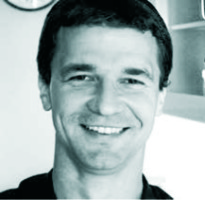Dear Colleagues,
It is my pleasure to meet you again with this year’s sixth successfully edited issue of our journal. As I mentioned previously, I am eagerly awaiting the opportunity to meet possibly all our co-editors at the World Congress of Brachytherapy in Vienna, Austria (April 2-4th, 2020).
This issue starts with an invited Letter to the Editor written by Prof. Tomasz Pospieszny from the Adam Mickiewicz University in Poznań, Poland. His interesting summary of Maria Skłodowska-Curie’s input to nuclear physics and her brachytherapy (curietherapy) legacy is really worth reading. Let it be our tribute to Maria on the occasion of her birthday so well celebrated all around the world this November. Dear Professor, thank you for your time, passion, and efforts put into submission of the letter. Dear readers, just enjoy.
One could repeat after Bobby McFerrin “Don’t worry, be HAPPY”. This is what we want for our patients: health and happiness after cure. So, while treating them for cancer, we should also remember about their emotional state. The “HAPPY” Italian group addressed this important issue in their original paper which opens JCB 6/2019. Read and learn what bothers patients most during courses of interventional radiotherapy.
Again from Italy, Andrea Vavassori et al. present the monoinstitutional retrospective results of cervical cancer combined treatment consisting of intensity-modulated radiation therapy (IMRT) and the infrequently reported pulsed-dose-rate (PDR) brachytherapy. Such an approach can be considered an effective treatment for cervical cancer despite the high percentage of locally advanced disease.
Guidelines and recommendations regarding cervical cancer treatment are to be followed worldwide. All focus on the necessity of combining brachytherapy with chemoradiation. The Indian Brachytherapy Society carried out an online survey on patterns of cervical brachytherapy in India and revealed a progressive shift from 2D to 3D image-based parameters for planning and a need for further efforts in the transition to more advanced brachytherapy techniques and treatment planning.
Polish Brachytherapy Society members from Poznań claim that reducing dysphagia with palliative 2D high-dose-rate (HDR) brachytherapy improves survival in esophageal cancer. Survival is prolonged in patients who respond to the treatment, they conclude.
Another original paper from Poland is on the detection of individual prostate cancer via multiparametric magnetic resonance imaging (mpMRI). It appears that introducing pre-biopsy mpMRI may increase the prostate cancer detection rate and in some patients (with no signs of clinically significant prostate cancer) even allows an unnecessary biopsy to be avoided.
Souransu Sen et al. from Kolkata, India, conducted a dosimetric study on electron beam therapy vs. HDR mould BT in adjuvant treatment of non-melanoma skin carcinomas of the head and neck region. As they conclude, CT-based surface mould BT results in better conformity of superficial lesions on small, irregular surfaces than electrons with the cost of a slightly higher skin dose.
Ophthalmologists from Kraków (Poland) performed a retrospective analysis of factors which might affect the occurrence of a relapse of uveal melanoma after iodine plaque brachytherapy. They claim that the involvement of the ciliary body may influence the relapse rate most. Their observation is based on the analysis of clinical data of over 340 patients.
There is also a physics contribution from India on the measurements and Monte Carlo calculation of radial dose and anisotropy functions of a high-dose-rate cobalt-60 source.
The current issue also contains 2 case reports. The first was submitted from Japan and is on a new silicone implant device designed to safely and easily prevent edema-associated underdosage in HDR interstitial BT of mobile tongue cancer. The latter comes from Israel and is a challenging and unique attempt of endovascular BT for extensive right-heart and pulmonary artery sarcoma. Congratulations.
In a technical note, Shahil Mehta et al. from Miami (USA) performed a dosimetric analysis to quantify the impact of the Smit sleeve used in treatment of locally advanced cervical cancer on the integral dose and dose delivered to the organs at risk.
The last two papers are educational. The first comes from Germany and Italy and is a profound critical review of multidisciplinary non-surgical local interventional ablation techniques in primary or secondary liver malignancies. The authors covered all relevant non-surgical ways of intervention including brachytherapy. The second educational article was submitted by colleagues from Dallas (USA) and is on prostate brachytherapy procedural training relating to resident training and competency assessment. It appears that trainee involvement in procedures may help facilitate increased comfort with common skills.
Yours sincerely,
Journal of Contemporary Brachytherapy



